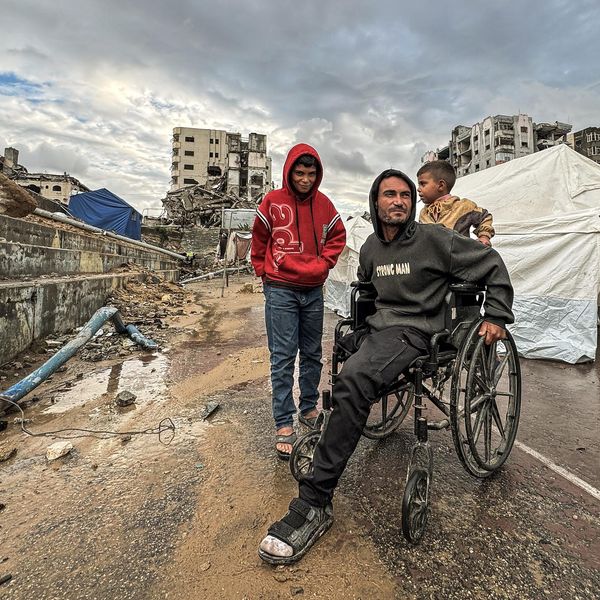In recent weeks, peaceful demonstrators across America have been confronted by National Guard troops in the nation’s capital and by militarized police in cities, armed with tear gas and rubber bullets. Meanwhile, heavily armed militias have taken it upon themselves to counter-protest, calling to mind the rifle-toting protestors that stormed the Michigan Capitol in May to demand an end to the state’s stay-at-home order.
It doesn’t come as a surprise, then, that a recent report by the Institute for Economics and Peace validates that America is a dangerous place. Peace was deteriorating pre-COVID, and the current health, racial, and economic crises compounded have put the country at greater risk of continued internal violence.
The 2020 Global Peace Index is now in its fourteenth year of ranking 163 states and territories according to their level of peacefulness. It defines peace “in terms of the harmony achieved by the absence of violence or the fear of violence… described as Negative Peace.” Its complement is Positive Peace, which are the “attitudes, institutions and structures that create and sustain peaceful societies.”
The GPI measures peace in three domains: Societal Safety and Security, Ongoing Domestic and International Conflict, and Militarization. Some findings for this year are unsurprising: Iceland is ranked first in peacefulness, a position it has held since 2008, while Afghanistan is ranked the least peaceful country in the world for the second year in a row.
What may be controversial to some is the ranking of the world’s largest economy. The United States is ranked 121st in peacefulness out of 163 countries for the second year in a row, coming in lower than China, Bolivia, Chile, and France, which have experienced violent protests in the last year, and El Salvador, which has the highest number of homicides per 100,000 inhabitants. Our culturally similar neighbor to the north, Canada, is ranked the 6th most peaceful country in the world.
The United States’ ranking isn’t so remarkable considering that military spending accounts for 15 percent of all U.S. federal spending and more than half of the discretionary budget. Only North Korea, Russia, and Israel are higher on the GPI’s “militarization” ranking. The report uses seven indicators to measure the degree of militarization of a society, including military expenditure as a percentage of GDP and the volume of arms exports and imports per 100,000 people. Though the militarization domain did improve globally in the last year due to reductions in military expenditure, the U.S., Russia, Germany, France, and China still account for 75 percent of total weapons exports, while the U.S. alone accounts for 32 percent.
This spending has fueled America’s endless wars and the arming of foreign governments in brutal conflicts in the Middle East. This includes the $3.3 billion in military financing to Israel as it continues to launch attacks on the Gaza Strip and eagerly plans its annexation of the West Bank, and the over $100 billion in military sales to Saudi Arabia as it leads coalition airstrikes in Yemen which have led to catastrophic civilian death tolls.
Afghanistan, after trillions in spending and two decades of American military presence — the longest war in U.S. history — has the highest total number of deaths from internal conflict in the world.
In addition to covering internal violence and militarization, this year’s report includes a crucial new section: an analysis of the effect of COVID-19 on peace in societies. This section uses eight Positive Peace pillars that describe the institutions and structures of a society, including “well-functioning government,” “sound business environment,” and “low levels of corruption” to assess how well a country has dealt with the pandemic. The GPI notes that “countries with strong Positive Peace have higher resilience to absorb, adapt, and recover from shocks, such as COVID-19 and the ensuing recession.”
The United States’ weakness in the “well-functioning government” and “high levels of human capital” pillars explain why such a small proportion of the population was tested during the initial weeks of the outbreak. As of April 10, 2020, with fewer than 10,000 tests per million residents, the U.S. had tested fewer people than other developed countries, including Canada, Australia, and Norway. Lithuania, Italy, and Latvia had also tested more than the U.S. The capabilities described by “well-functioning government” enable authorities to quickly implement lockdown measures to flatten the epidemiological curve, and “high levels of human capital” allow a society to withstand the stress on its health system.
The report’s other pillars are also helpful in explaining the U.S.’s poor handling of the pandemic, and their underdevelopment points to signs of even further deterioration of American peace in the future. A combination of lockdown measures and insufficient rescue funds for small businesses weaken the U.S. “sound business environment” pillar. A severe lack of testing and personal protective equipment across the country, and especially among low-income and black and Hispanic neighborhoods where the virus already has a disproportionate impact, expose a broken healthcare system and America’s poor performance in the “equitable distribution of resources” pillar.
For years funds have been insufficiently allocated to healthcare, housing, education, and other essential services to prioritize national security and defense, which has ultimately eroded the public’s trust in American leadership. The weakening of each of these pillars helps illustrate how we arrived at the current moment of a frustrated society and anti-racist protests taking place in cities across all 50 states. Overwhelmed American hospitals, weeks of civil unrest, and a contracting economy have exposed how fragile the systems that uphold the United States truly are.
Those who favor militaristic policies often characterize their position as seeking “peace through strength.” Yet the GPI report and the failed response to COVID-19 expose the faulty logic behind this. Peace and security at home cannot be achieved merely by projecting military power abroad — and in fact, the U.S. insistence on global military domination has actively undermined both domestic and international peace.
The consequences of America’s long-standing bipartisan tradition of supporting increases to the Pentagon budget while ignoring other crucial departments and government functions, compounded by the Trump administration’s cuts towards health and environment agencies, have now been made apparent with the current administration’s disastrous handling of the COVID-19 crisis.
If we are to avoid the repetition of this catastrophe in the future, America must reorient a significant portion of its federal budget away from defense spending and towards public health and social services to build greater internal peace and resilience. American leaders must rethink national security to center around the well-being of its people rather than the pursuit of military dominance abroad.
The true long-term consequences of COVID-19 on peace in American society are still unknown. However, if the U.S. cannot improve its handling of the virus and rapidly reassess its governing priorities, it is likely that the United States’ ranking as the 121st most peaceful country in the world will sink even further in future GPI reports.
















